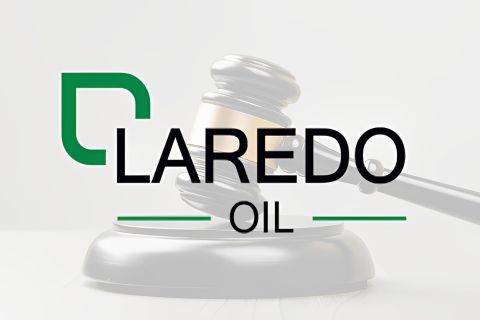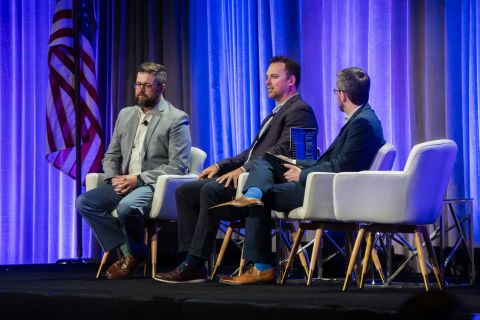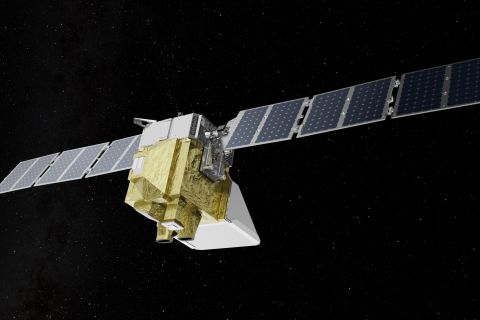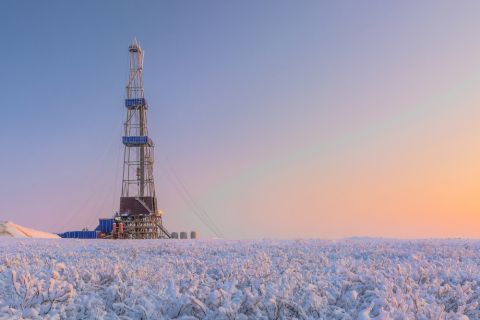 |
| Pride International has undergone a major restructuring. |
Despite recent economic downturn, deep and ultra-deepwater projects worldwide are experiencing very little decrease in activity. Areas like Brazil’s Santos Basin, West Africa offshore Angola, and the Lower Tertiary region of the US Gulf of Mexico (GoM) continue to attract operators and their technology partners. Drilling companies prepared to dive into these ultra-deepwater areas may find a safe haven in which to weather the current economic storm.
One such company is Pride International. Since 2005, the company has undergone a major restructuring and is now emerging as a premiere deepwater player with the infrastructure and the expertise to tackle the most demanding deepwater projects.
Fine-tuning the focus
Louis A. Raspino was named president and CEO of Pride International in June 2005 in the early stages of a long process of market analysis and an in-depth inventory of Pride’s various businesses.
“We wanted to determine what had driven our success and what would drive success in the future,” Raspino said, “All of our analysis basically told us that the oil and gas industry was changing into a heavy focus on deep water.”
The company determined that deepwater targets would have the greatest impact for both international and national oil companies because of their need for large resource plays. Those deep and ultra-deepwater resources require the most sophisticated equipment. According to Raspino, Pride set out to expand its already established deepwater capacity.
“When we stepped back and looked at what Pride was at that time, the company was very unfocused,” Raspino said. In 2005, the company was the largest US land driller outside of North America with major land operations in South America and the Eastern Hemisphere. It had operations in the shallow-water GoM and owned several service businesses, construction businesses, and a floating hotel in the North Sea. But it was the company’s deepwater activities — in Brazil and Angola — that exemplified what Pride did best, Raspino said. “Both of these were our highest performing operations. This was a strange set of alignment because what this company did well is also what we wanted to do more of.”
This observation initiated a program of studying what else the company had and asking, “Do we need to continue doing that?” Raspino said.
With a deepwater focus in mind, Pride began to peel apart the businesses that did not fit the company’s new focus. Dismantling started with selling all of the Latin American land and service operations, the floating hotel in the North Sea, tender and platform rigs, and land rigs in the Eastern Hemisphere.
“We then used that money to grow the company in the deepwater arena,” Raspino said, “which started with Pride buying out its joint venture partners in Angola and Brazil.”
The company also has announced its intention of spinning off its shallow-water mat-jackup rigs in the GoM and is well along in the process.
When asked “Why deep water?” Raspino said, “We believe that’s where the future is for this business.”
Working with deepwater operating companies has a set of specific benefits, especially in tight economies. They tend to be larger companies that are very well capitalized and have strong balance sheets, and they typically carry out projects on long-term price horizons.
“Most deepwater customers aren’t drilling primarily based on this year’s cash flow, and they tend to drill through cycles. That’s where Pride wanted to be.” Raspino said.
Over the last several years, Pride has invested or committed more than US $3 billion growing its deepwater operations. When it bought out its JV partners, the company ended up with immediate additions to its equity portfolio of one deepwater drillship and one-and-a-half deepwater semisubmersibles. Both of these were in operation at very good rates of return. The company is also constructing four newbuild drillships, which are scheduled to be delivered in 2010 and 2011. Three of these have already been awarded significant long-term contracts.
“It’s been an extreme corporate makeover,” Raspino explained. “We started with a company that was highly leveraged and very unfocused in a down market. The company had grown so fast that its infrastructure, capital structure, and strategy didn’t grow with it. Pride had done a lot of deals but had ended up with disparate asset bases.”
As a result of the analysis performed, Pride developed a four-part strategy to focus solely on deep water. The first step was to get its financial structure in place, which was followed by making improvements to the company’s infrastructure to support its size. The company then set out to rationalize its asset base, which meant divesting the assets that did not fit its long-term strategy. The final phase, which is now under way, is to grow the asset base with a focus on what the company aims to be.
Positive results
The last major piece in Pride’s transition to a premier high-spec deepwater offshore drilling company is expected to be completed in 2009 with the spinoff of its mat-jackup business.
“The mat-jackup business, while it didn’t fit into our strategy of floating and high-spec deep water, was at least offshore,” Raspino explained. From 2005 through 2008, the shallow-water natural gas market was fairly strong, and the company’s jackup fleet continued to generate cash flow. However, it was on the company’s radar to look at how that unit could be separated to achieve Pride’s stated deepwater objective.
“Observation showed that the investment community tended to bifurcate its valuation of offshore drilling companies — paying higher multiples for floating/deepwater operations than it did for shallow-water jackup operations. The mat-jackup business was overshadowing everything else Pride was doing from an investment perspective because that is where the short-term volatility existed,” Raspino said.
“The company’s deepwater fleet was under long-term contracts where you could see the cash flow coming without many surprises. The jackups in the US GoM were mostly under short-term contracts and subject to the ups and downs of the US natural gas market,” Raspino said. “The company’s stock continued to trade as if we were a shallow-water GoM company even though it was being built up to be something very different.
“That led us to the conclusion that now is the time to separate these two businesses, creating two unique choices for our investors.” Raspino said.
Today, Pride is in the process of separating this segment into a separate publicly traded company to be called Seahawk Drilling for investors who want to focus on a highly leveraged shallow-water natural gas play in the US GoM. However, if they prefer to have a play on the international floating rig market — which is a very different market — with a company that is focused on the deep water, they can go to the remaining Pride.
“It is our belief that by separating the company into these two pieces and allowing them to be valued separately by the market place, we will create a situation where the sum of the parts is greater than the whole,” Raspino said.
This strategy appears to be paying off. S&P recently labeled Pride as “investment grade” for the first time in the company’s history. “This is solid recognition by an independent party that we’ve been doing what we need to do by cleaning up our balance sheet and asset base, getting the right growth investments in place, the right strategy in place, having the right operating performance, establishing credibility on Wall Street, and delivering what we said we were going to do.” Raspino said.
Deepwater growth opportunities
Even in this period of extreme worldwide economic upset, the deepwater trend remains strong. The best example of this is Petrobras’ recent announcement to invest $174 billion within the next five years, 60% of which will go to upstream development projects, with one-third being invested in subsalt exploration in the Santos Basin. The total investment is 61% higher than that published in the company’s previous five-year plan. Petrobras is also targeting West Africa, where the industry continues to see high success rates in exploration projects, and the same can be said for the Lower Tertiary in the GoM.
The good news for Pride is that these projects will require high-spec vessels like the four Pride is building. Of the three contracts the company has been awarded, two are with BP for the US GoM, and one is with Petrobras for work in Angola.
“In all cycles, the deep and ultra-deepwater sector is the most resilient we’ve seen in the industry.” Raspino said. With an increased focus on deep water and a solid transformation into a premiere deepwater drilling contractor, Pride has ensured its strategic position through these harsh economic times.
Recommended Reading
Laredo Oil Settles Lawsuit with A&S Minerals, Erehwon
2024-03-12 - Laredo Oil said a confidential settlement agreement resolves a title dispute with Erehwon Oil & Gas LLC and A&S Minerals Development Co. LLC regarding mineral rights in Valley County, Montana.
From Satellites to Regulators, Everyone is Snooping on Oil, Gas
2024-04-10 - From methane taxes to an environmental group’s satellite trained on oil and gas emissions, producers face intense scrutiny, even if the watchers aren’t necessarily interested in solving the problem.
Markman: Is MethaneSAT Watching You? Yes.
2024-04-05 - EDF’s MethaneSAT is the first satellite devoted exclusively to methane and it is targeting the oil and gas space.
Biden Administration Criticized for Limits to Arctic Oil, Gas Drilling
2024-04-19 - The Bureau of Land Management is limiting new oil and gas leasing in the Arctic and also shut down a road proposal for industrial mining purposes.
Exclusive: ‘Regulatory Tsunami’ a Top Priority for American Producers, Says AXPC’s Bradbury
2024-04-22 - Regulatory considerations have significant implications for how oil and gas companies evaluate risk, and it’s a top priority for American energy producers right now, said American Exploration & Production Council CEO Anne Bradbury at CERAWeek by S&P Global.





